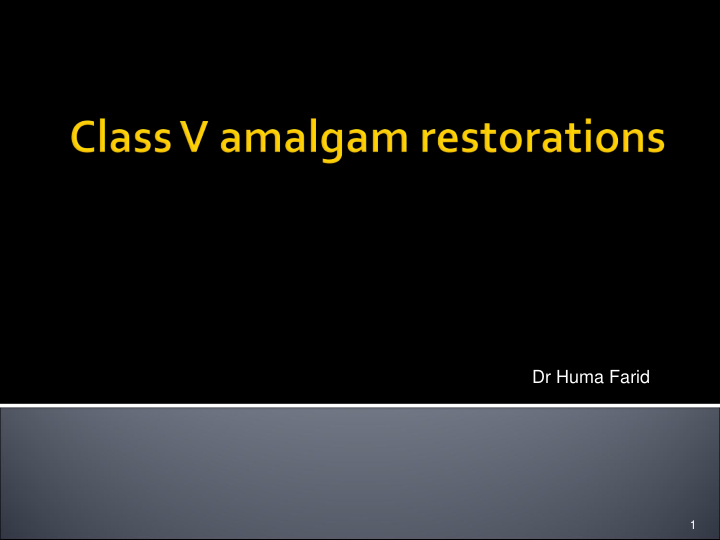



Dr Huma Farid 1
Class V restorations, by definition, include the gingival one third (i.e., cervical area) of the facial and lingual surface of the tooth crown 2
Class V amalgam restorations may be used anywhere in the mouth. Amalgam may be preferred over esthetic restorative materials on partial denture abutment teeth, because amalgam is more resistant to wear as clasps move over the restoration. Occasionally, amalgam is preferred when the carious lesion extends gingivally enough that a soft-tissue flap must be reflected for adequate access and visibility 3
Esthetically important areas because many patients object to metal restorations 4
Easier to place Less expensive Because of its metallic color, amalgam is easily distinguished from the surrounding tooth structure. Therefore amalgam restorations are usually easier to finish and polish without damage to the adjacent surfaces 5
Metallic Poor esthetics The preparation for an amalgam restoration typically requires 90-degree cavosurface margins, specific and uniform axial depths, and incorporation of secondary retentive features, all of which results in a less conservative preparation 6
Rubber dam & cervical clamp Cotton rolls 7
8
Taper Fissure bur 9
Divergent walls 10
Axiogingival groove Axioincisal groove Starts at axiopulpal gingival point angle Round Bur 11
12
13
14
15
16
17
Recommend
More recommend